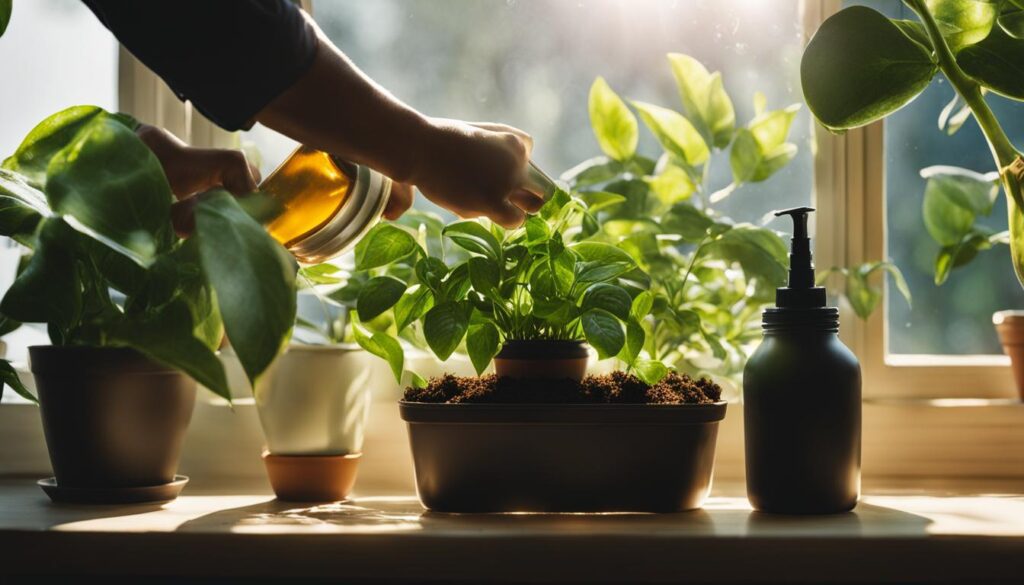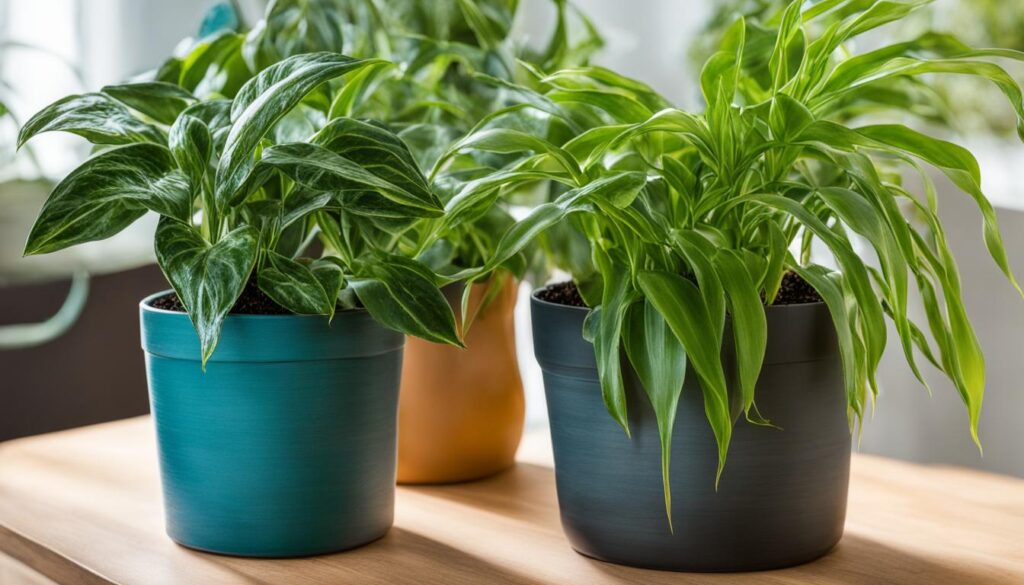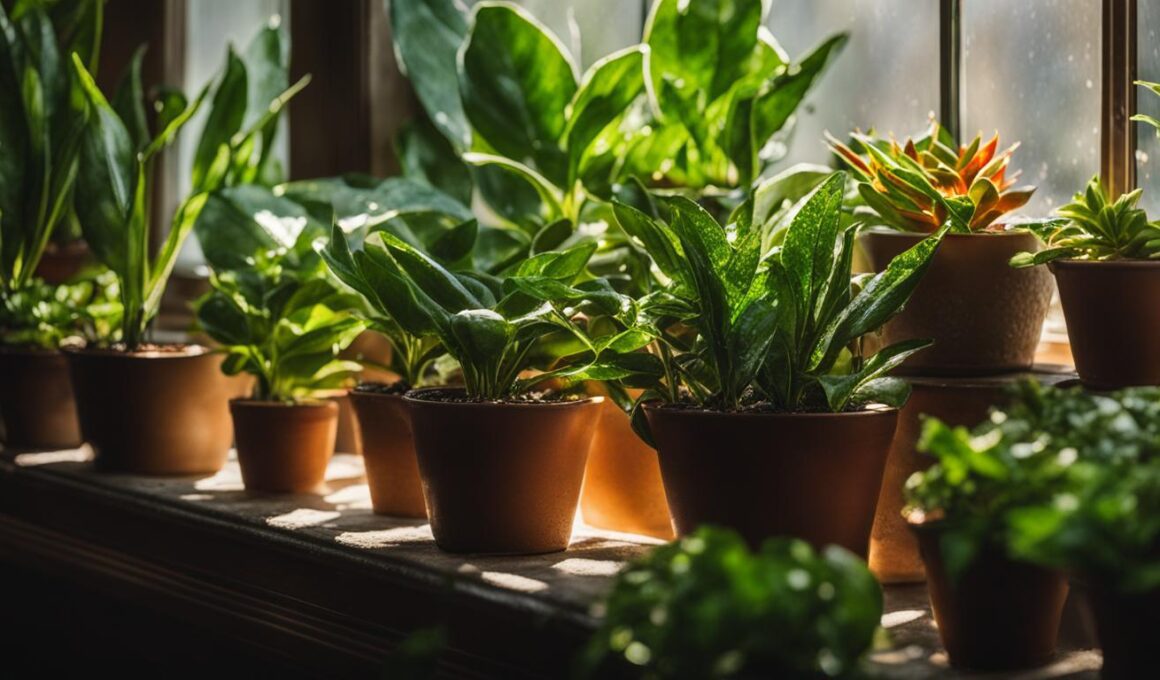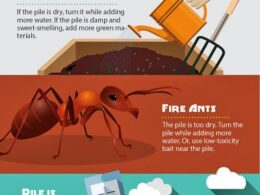Are your indoor and outdoor plants not thriving as you’d like them to? It could be because they are missing essential nutrients. Luckily, there’s a solution – Tomorite. This plant food, enriched with seaweed and packed with potassium, nitrogen, and magnesium, is the secret to promoting healthy growth in your beloved houseplants.
Whether you have beautiful flowering plants or a collection of green foliage, feeding them with Tomorite can make a significant difference. This versatile plant food is suitable for both indoor and outdoor plants, ensuring that your green companions receive the nutrients they need to flourish.
When you feed your houseplants with Tomorite, you provide them with the necessary elements to grow more vigorously, develop a robust root system, and produce an abundance of gorgeous blooms. It’s not just limited to flowers, though. Tomorite can also be used to feed other plants, including the vegetables in your garden.
Post Summary:- Tomorite is a plant food enriched with seaweed, potassium, nitrogen, and magnesium.
- It can be used on both indoor and outdoor plants, particularly beneficial for flowering plants.
- Feeding houseplants with Tomorite promotes vigorous growth, strong roots, and abundant blooms.
- Follow the instructions on the packaging to avoid overapplication, as excessive use can harm your plants.
- Consult gardening experts for advice on the best feeding schedule and dosage for optimal results.
Can You Use Tomorite on Houseplants?
When it comes to fertilizing houseplants, there are numerous options available. However, if you’re looking for a general fertilizer that can be used on most houseplants, Tomorite is a great choice. This versatile plant food is suitable for both indoor and outdoor plants, making it convenient for all plant lovers.
Using Tomorite on houseplants is relatively straightforward. Before applying the fertilizer, make sure to water your plants well. This helps prevent leaf scorching, especially for indoor plants. Once the soil is moist, mix the recommended amount of Tomorite with water according to the instructions on the packaging.
While Tomorite is suitable for most houseplants, there are a few exceptions. Some plants, including African violets, palms, ferns, and blooming houseplants, may not benefit from Tomorite and should be treated with caution. It’s always a good idea to test a small amount on the soil and observe any adverse reactions before applying it to the entire plant. By being mindful of the specific needs of your plants, you can ensure they receive the appropriate care and nutrients they require to thrive.

When to Feed Your Plants with Tomorite
Knowing when and how to feed your plants is crucial for their health. For most houseplants, feeding with a diluted solution of Tomorite once a month is sufficient. However, it’s essential to read the instructions on the packaging to ensure you’re applying the correct amount. Over-fertilizing can be harmful to plants, so it’s better to slightly underfeed them than overfeed. Tomorite can also be used to feed other types of plants, such as vegetables, fruits, and lawns. It’s important to follow the recommended dosage for each specific plant to avoid overfeeding or underfeeding.
Feeding Frequency
The frequency of feeding plants with Tomorite may vary depending on the specific plant’s needs and growth stage. Some plants may require more frequent feeding, while others may need less. It’s recommended to start with a monthly feeding schedule and adjust it accordingly based on your plants’ response. Observe their growth, color, and overall health to determine if they require more or less frequent feeding.
Instructions for Feeding Plants with Tomorite
When feeding your plants with Tomorite, it’s important to follow the instructions provided on the packaging. These instructions will specify the recommended dosage and dilution ratio for different types of plants. It’s crucial to measure and mix the correct amount of Tomorite with water to prevent over or underfeeding. Applying Tomorite directly to the soil or using a watering can to evenly distribute the solution are common methods for feeding plants. Ensure that the entire root system receives the nutrients by watering the plants thoroughly after applying Tomorite.
| Plant Type | Feeding Frequency |
|---|---|
| Flowering Indoor Plants | Once a month |
| Foliage Indoor Plants | Every 2 months |
| Vegetables and Fruits | Every 2-3 weeks |
| Lawns | Every 3-4 weeks |
“Feeding your plants with the right nutrients at the right time can significantly improve their overall health and growth. Tomorite provides a balanced blend of essential nutrients, ensuring your plants receive the necessary elements for optimal development. Following the feeding instructions and adjusting the frequency based on your plants’ response will help you achieve thriving, vibrant greenery.”
Comparison Between Tomorite and Other Plant Foods
When it comes to choosing the right plant food for your garden, Tomorite offers a balanced nutrient composition that sets it apart from other fertilizers on the market. While there are many options available, Tomorite has gained popularity among gardeners for its effectiveness and convenience.
Tomorite contains essential elements such as calcium, magnesium, and potassium, which are vital for healthy plant growth. These nutrients help plants develop strong root systems and promote vigorous growth, resulting in more prolific flowering. The balanced nutrient balance in Tomorite ensures that plants receive the right amount of each element, supporting their overall health and vitality.
| Tomorite | Other Plant Foods |
|---|---|
| Contains calcium, magnesium, and potassium | May lack essential nutrients |
| Easy to use – no measuring tools required | Measurements may be complex or imprecise |
| Proven effectiveness | Effectiveness may vary |
Unlike some other fertilizers that may lack certain essential nutrients, Tomorite provides a comprehensive solution for plant nutrition. Its balanced composition ensures that plants receive the necessary nutrients in the right proportions, leading to optimal growth and development.
In addition to its nutrient balance, Tomorite is also known for its user-friendly application. With no measuring tools required, it’s easy to mix the recommended amount with water and apply it to your plants’ soil. This convenience makes Tomorite a popular choice among gardeners who want a hassle-free way to nourish their plants.
While there may be cheaper alternatives available, the effectiveness and convenience of Tomorite make it a preferred option for many gardeners. Its balanced nutrient composition and ease of use contribute to healthier and more vibrant plants in your garden. For best results, always follow the manufacturer’s instructions and consult gardening experts for advice on the most suitable fertilizer for your specific plants.

What are the Pros and Cons of Using Diatomaceous Earth for Houseplants?
Diatomaceous earth, made from fossilized remains of diatoms, offers numerous diatomaceous earth benefits and drawbacks for houseplants. As a natural pest control solution, it effectively eliminates insects by dehydrating their exoskeletons. Additionally, it absorbs excess moisture and prevents mold growth. However, inhalation of the fine particles can pose health risks and it may harm beneficial insects. Proper use and caution are essential when utilizing diatomaceous earth for houseplants.
Feeding Houseplants With Tomorite: Boost Your Indoor Plant Health Today
Feeding your houseplants with Tomorite can have significant benefits for their overall health and well-being. Tomorite is a reliable and easy-to-use plant food that provides essential nutrients to both indoor and outdoor plants. By incorporating Tomorite into your plant care routine, you can promote vigorous growth, strengthen root development, and enhance the flowering process in your indoor plants.
When using Tomorite, it’s crucial to follow the instructions on the packaging carefully. Each plant has specific needs, so understanding the dosage and frequency of application is essential. Consulting gardening experts can provide valuable insights and help you establish the best feeding schedule and dosage for optimal results.
Investing in the health of your indoor plants pays off in the long run. Tomorite’s balanced nutrient composition, including vital elements such as potassium, magnesium, and calcium, ensures that your plants receive the nutrients they need for healthy growth. Additionally, Tomorite is easy to use, eliminating the need for measuring tools. Simply mix the recommended amount with water and apply it to the soil of your houseplants.
With Tomorite, you can confidently provide your indoor plants with the nourishment they require to thrive. Remember to be mindful of each plant’s specific needs and consult the packaging instructions or gardening experts for guidance. By incorporating Tomorite into your plant care routine, you can enjoy the benefits of vibrant, robust, and flourishing indoor plants.
FAQ
Can I use Tomorite on all houseplants?
Tomorite can be used on both indoor and outdoor plants, but some plants may not benefit from it. African violets, palms, ferns, and blooming houseplants should be treated with caution. It’s best to test a small amount on the soil first and observe any adverse reactions before using Tomorite at the recommended dosage.
How often should I feed my plants with Tomorite?
For most houseplants, feeding with a diluted solution of Tomorite once a month is sufficient. However, it’s important to read the instructions on the packaging to ensure you’re applying the correct amount.
Can I use Tomorite on vegetables and fruits?
Yes, Tomorite can be used to feed vegetables and fruits. However, it’s important to follow the recommended dosage for each specific plant to avoid overfeeding or underfeeding.
How is Tomorite different from other plant foods?
Tomorite stands out for its balanced nutrient composition specifically designed for plants. It contains calcium, magnesium, and potassium, which are essential for healthy plant growth. Unlike some other fertilizers, Tomorite is easy to use and requires no measuring tools.
Where can I find more information about using Tomorite?
If you have more questions about using Tomorite or need specific advice for your plants, consult the packaging instructions or gardening experts for personalized guidance.









